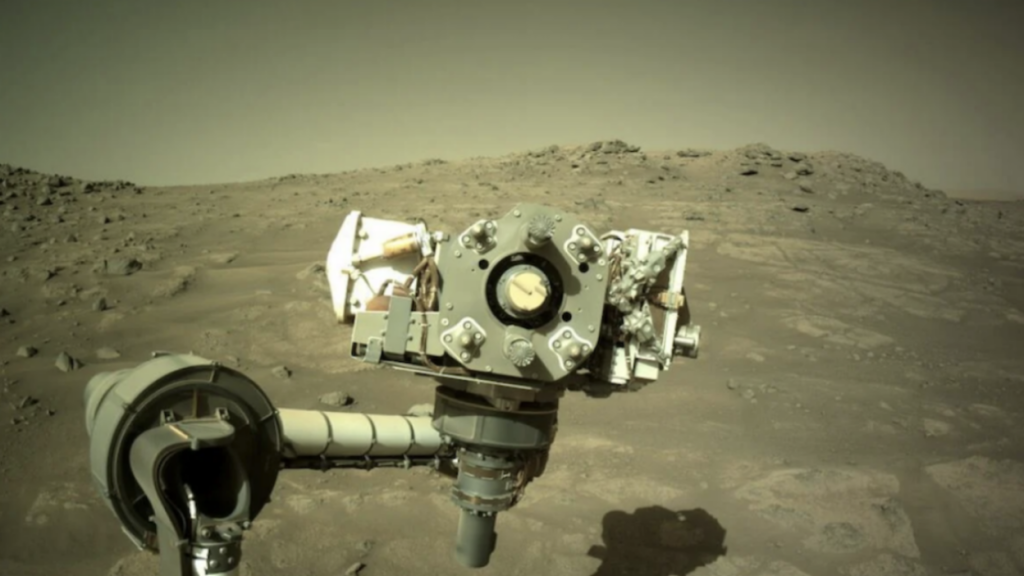
NASA rover climbs daunting slope, views its remarkable Mars adventure (Image Credit: Mashable)
NASA’s car-sized Perseverance rover is making a hard slog.
The space agency’s robot is fighting both steep and slippery terrain as it ascends the wall of Mars’ Jezero Crater, the site of once vigorously flowing water. The Mars rover is headed to more sites that may reveal whether the Red Planet ever hosted microbial life. It took advantage of the elevation to capture an expansive vista of its 3.5-year-journey.
“The image not only shows our past and present, but also shows the biggest challenge to getting where we want to be in the future,” Rick Welch, Perseverance’s deputy project manager, said in a statement. “If you look at the right side of the mosaic, you begin to get an idea what we’re dealing with. Mars didn’t want to make it easy for anyone to get to the top of this ridge.”
The mosaic below shows dozens of sites of exploration significance (as well as other Mars landmarks) as Perseverance and its six metallic tires rumbled across the Martian desert — a place now 1,000 times drier than the driest desert on Earth. The labels can be tough to read, so the broad vista is followed up by two close-ups: An area showing where NASA’s experimental and record-breaking Ingenuity helicopter crashed, and the region where the rover dramatically landed in 2021.

Credit: NASA / JPL-Caltech / ASU / MSSS

Credit: NASA / JPL-Caltech / ASU / MSSS

Credit: NASA / JPL-Caltech / ASU / MSSS
Along its journey through Jezero Crater this year, the rover discovered a curious leopard-spotted rock that incited profound scientific interest. The unique white splotches may have been created by microbial organisms. “The rock exhibits chemical signatures and structures that could possibly have been formed by life billions of years ago when the area being explored by the rover contained running water,” NASA said in a statement. But, crucially, much more research, over many years, is needed to confirm this possibility. The sample collected by the rover must be brought back to Earth — a highly complex and costly Mars Sample Return mission the agency is currently assessing.
Ascending the crater’s edge has proven daunting. The sand is loose, and the heavy rover slips. “For every two steps forward Perseverance takes, we were taking at least one step back,” Camden Miller, the rover’s remote driver, explained. The team has tried driving backwards up the steep terrain, and has crisscrossed back and forth across the slope, “switchbacking” like hikers traveling up a mountain.
Once the rover completes its ascent, it will sleuth out more sites that may hold clues to Mars’ past climate and habitability. In the future, Martian missions will also search the planet’s subsurface for hints of life: Life may have teemed, or even currently teem, in subsurface areas protected from the planet’s extreme radiation and cold.
Topics
NASA





